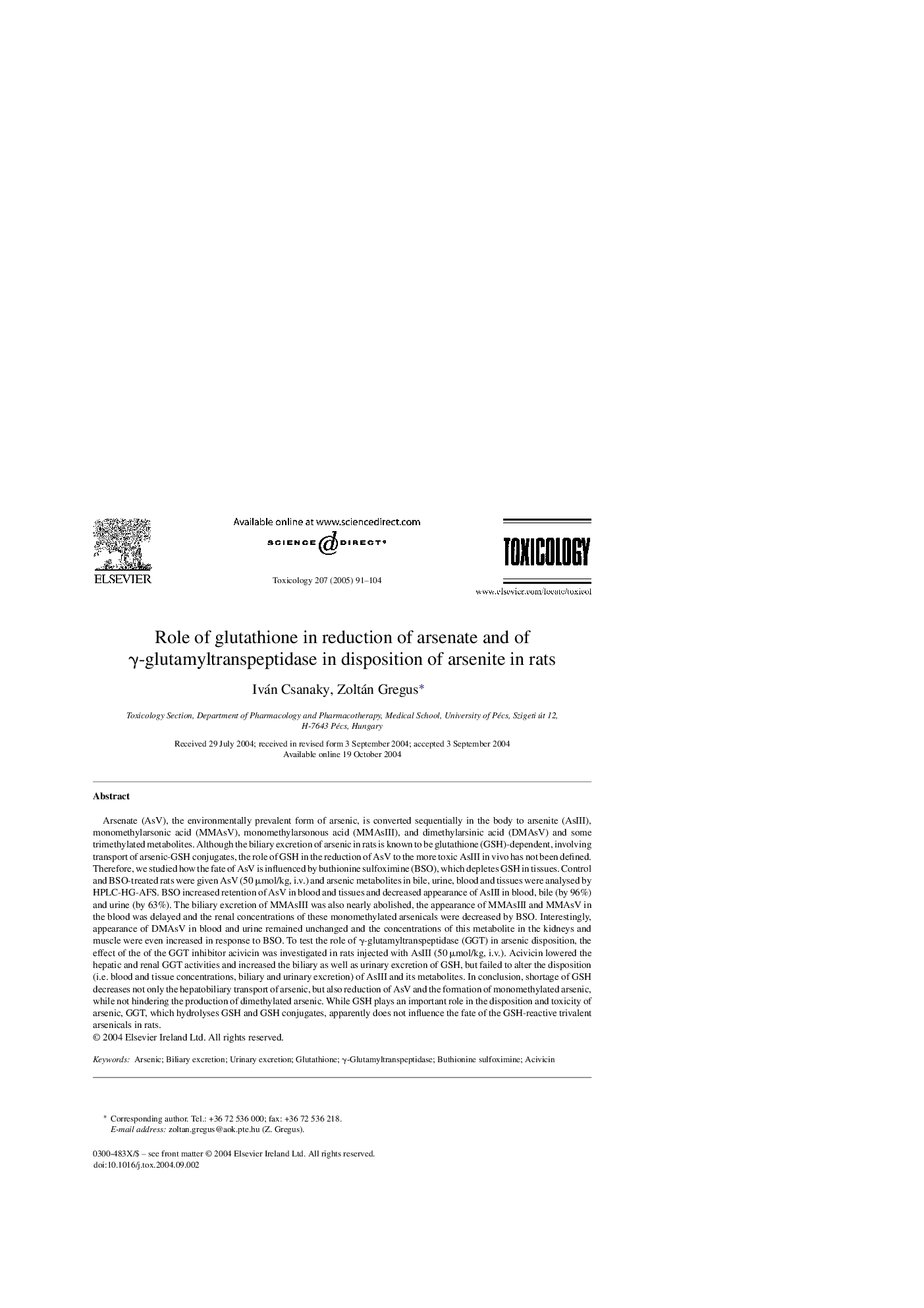| کد مقاله | کد نشریه | سال انتشار | مقاله انگلیسی | نسخه تمام متن |
|---|---|---|---|---|
| 9034507 | 1132617 | 2005 | 14 صفحه PDF | دانلود رایگان |
عنوان انگلیسی مقاله ISI
Role of glutathione in reduction of arsenate and of γ-glutamyltranspeptidase in disposition of arsenite in rats
دانلود مقاله + سفارش ترجمه
دانلود مقاله ISI انگلیسی
رایگان برای ایرانیان
کلمات کلیدی
موضوعات مرتبط
علوم زیستی و بیوفناوری
علوم محیط زیست
بهداشت، سم شناسی و جهش زایی
پیش نمایش صفحه اول مقاله

چکیده انگلیسی
Arsenate (AsV), the environmentally prevalent form of arsenic, is converted sequentially in the body to arsenite (AsIII), monomethylarsonic acid (MMAsV), monomethylarsonous acid (MMAsIII), and dimethylarsinic acid (DMAsV) and some trimethylated metabolites. Although the biliary excretion of arsenic in rats is known to be glutathione (GSH)-dependent, involving transport of arsenic-GSH conjugates, the role of GSH in the reduction of AsV to the more toxic AsIII in vivo has not been defined. Therefore, we studied how the fate of AsV is influenced by buthionine sulfoximine (BSO), which depletes GSH in tissues. Control and BSO-treated rats were given AsV (50 μmol/kg, i.v.) and arsenic metabolites in bile, urine, blood and tissues were analysed by HPLC-HG-AFS. BSO increased retention of AsV in blood and tissues and decreased appearance of AsIII in blood, bile (by 96%) and urine (by 63%). The biliary excretion of MMAsIII was also nearly abolished, the appearance of MMAsIII and MMAsV in the blood was delayed and the renal concentrations of these monomethylated arsenicals were decreased by BSO. Interestingly, appearance of DMAsV in blood and urine remained unchanged and the concentrations of this metabolite in the kidneys and muscle were even increased in response to BSO. To test the role of γ-glutamyltranspeptidase (GGT) in arsenic disposition, the effect of the of the GGT inhibitor acivicin was investigated in rats injected with AsIII (50 μmol/kg, i.v.). Acivicin lowered the hepatic and renal GGT activities and increased the biliary as well as urinary excretion of GSH, but failed to alter the disposition (i.e. blood and tissue concentrations, biliary and urinary excretion) of AsIII and its metabolites. In conclusion, shortage of GSH decreases not only the hepatobiliary transport of arsenic, but also reduction of AsV and the formation of monomethylated arsenic, while not hindering the production of dimethylated arsenic. While GSH plays an important role in the disposition and toxicity of arsenic, GGT, which hydrolyses GSH and GSH conjugates, apparently does not influence the fate of the GSH-reactive trivalent arsenicals in rats.
ناشر
Database: Elsevier - ScienceDirect (ساینس دایرکت)
Journal: Toxicology - Volume 207, Issue 1, 1 February 2005, Pages 91-104
Journal: Toxicology - Volume 207, Issue 1, 1 February 2005, Pages 91-104
نویسندگان
Iván Csanaky, Zoltán Gregus,